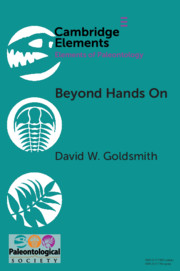Element contents
Beyond Hands On
Published online by Cambridge University Press: 30 October 2018
Summary
- Type
- Element
- Information
- Series: Elements of PaleontologyOnline ISBN: 9781108681544Publisher: Cambridge University PressPrint publication: 29 November 2018
References
- 20
- Cited by



